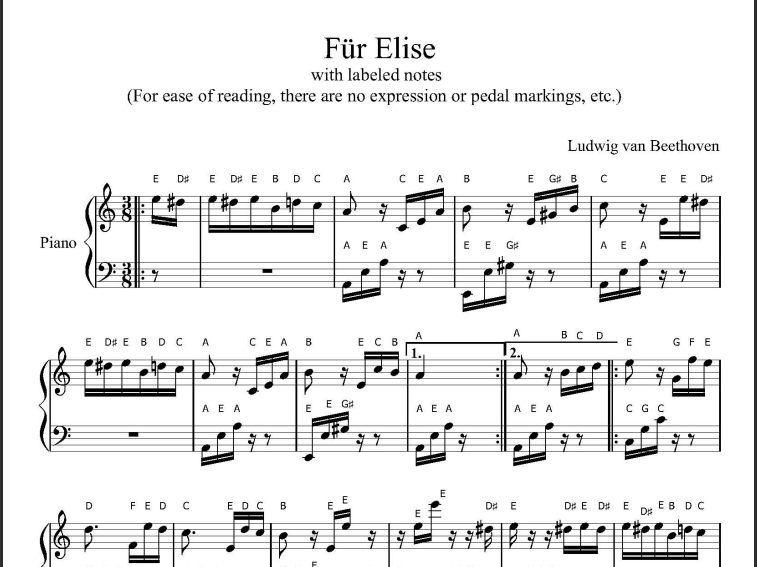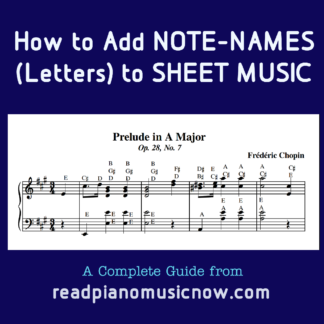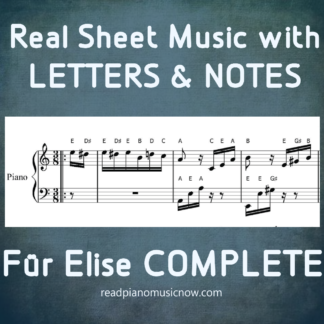
- ALSO check out my new book! Learn how to add Note-Names (Letters) to ANY Sheet Music for Piano (and many other instruments)!
Für Elise – Main Theme – REFERENCE VIDEO
GRAPHICALLY illustrated on a piano keyboard (with sound)
~ Slow Tempo ~
For reference and learning
Hello from Kent!
Today I’m sharing an older YouTube video of mine, from around 2010.
This video (at bottom) covers the MAIN SECTION of ‘Für Elise’ by Beethoven, as illustrated in slow-motion (with pitch-corrected sound) on a keyboard.
I generated this video from my Complete ‘Für Elise’ Sheet Music with Letters, which I sell HERE (on this website).
MY SHEET MUSIC BELOW (AS OPPOSED TO THE VIDEO), COVERS THE ENTIRE PIECE (NOT JUST THE THEME).
Here’s the clickable product image (on this site), for details:
ABOUT THE VIDEO BELOW
This video (below) is a very slow sheet music playback of the main section, or theme, of Für Elise by Ludwig v. Beethoven (not a human performance).
The graphic animation of the keyboard itself is at slow-motion speed, BUT, the pitch of the music is normal. This means all the notes you hear (and what you see highlighted) are the exact pitches, as notated in the sheet music.
This video can serve as a visual and audible reference tool, to help keep your bearings on the keyboard, and to make sure you’re reading the sheet music right, as regards matching the notes on the page to the keys on your piano.
Since this is a sheet music playback, and not a performance, you can hear all the notes (with slowed-down tempo) correctly, but there is no human expression. Therefore, I highly recommend using high-quality recordings of this piece, as your reference for all the artistic performance aspects.
This video can also be helpful for those who play piano entirely by ear. In this case, it is still not meant to be used as a model for performance, but more as a source for finding all the right notes, and for observing how things are timed (even though this version is played very slowly, it strictly observes all the rhythmic aspects of the original piece, as notated in the formal sheet music).
The TOP and BOTTOM KEYBOARDS – Why two?
The TOP keyboard graphic shows the RIGHT-HAND PART, and the bottom keyboard shows the LEFT-HAND part.
This is based on how the piece was notated, and how it is typically performed. With Für Elise in particular, I found this to be a good format for clarity and learning. The main sections of Für Elise have a very interesting relationship between the two hands–which is more apparent, I hope, when visually dividing the keyboard in this way. I welcome your opinion!
– Kent

